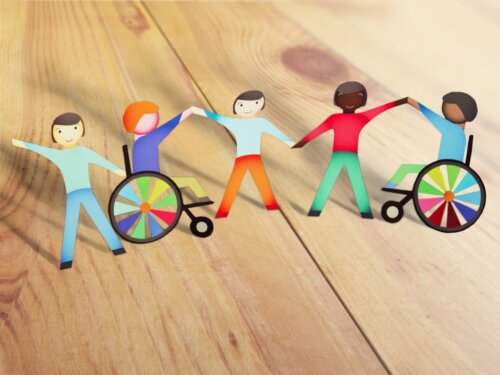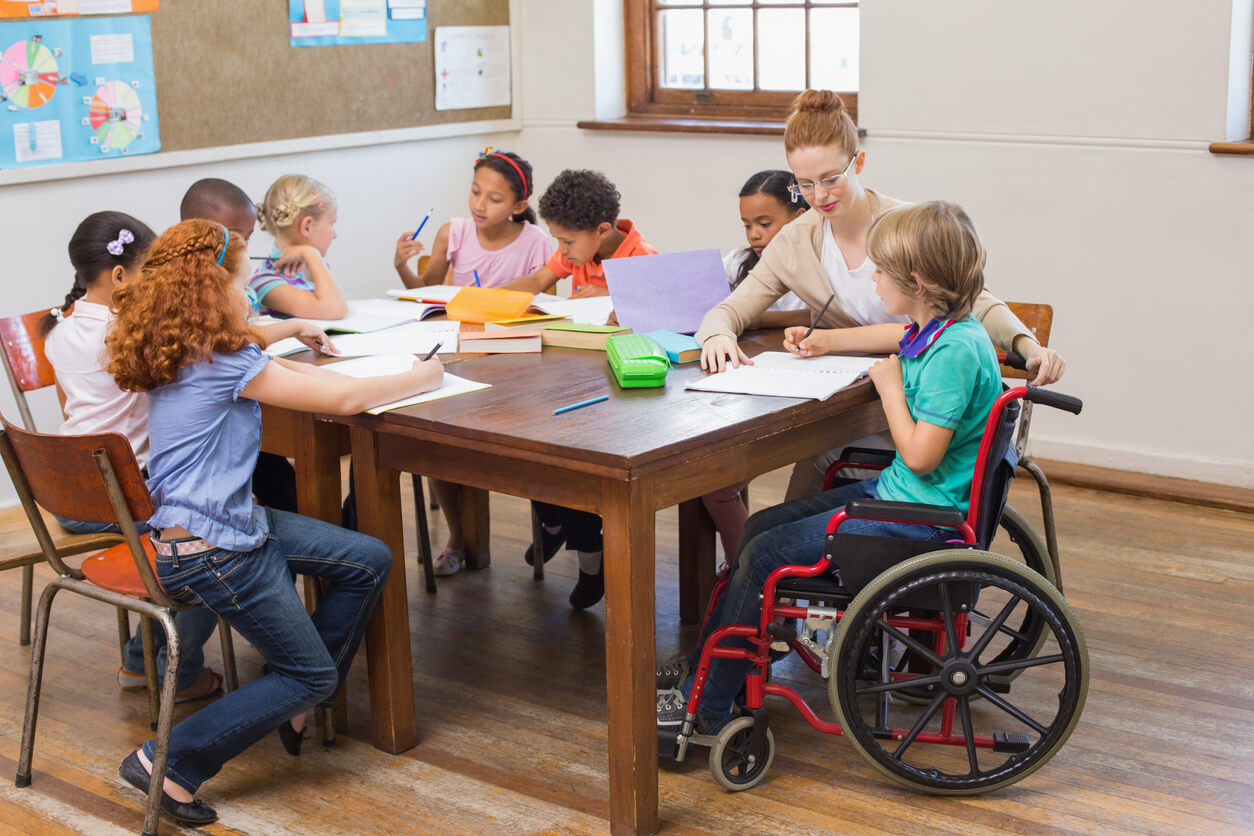What School Inclusion Is NOT

Many institutions boast of providing inclusive education, but not all actually do so. Most of the time, this isn’t due to a lack of willingness, but rather a lack of knowledge or resources. The reality forces schools to review their methodologies, as well as their pedagogical and professional practices when it comes to school inclusion.
The profound social changes of the last decades have brought new challenges to the educational system. In this regard, the concept of school inclusion has undergone modifications over the years and, fortunately, is in permanent transformation. Theoretical and legislative frameworks have evolved and, with them, so have the strategies used in and out of the classroom.
What is not school inclusion?
School inclusion is only one of the many aspects involved in the equitable paradigm that aims at respecting diversity in all its forms. It’s constituted from an ethical perspective that deepens the consolidation of human rights. In order to clarify frequent misconceptions, we’ll take a look at those erroneous beliefs spread in relation to inclusive education. In this regard, we must bear in mind that school inclusion is not the following:
- Helping students fit into the educational system
- Giving everyone the same resources
- An issue designed exclusively for people with disabilities
- A practice that occurs only in settings involving children
- Integration

It’s not about helping students fit into the educational system
School inclusion is just the opposite. It’s about institutions adjusting their practices to the needs of each of their students. In other words, it implies teamwork in which teachers, pedagogical teams, directors, and families adapt their methodologies in order to facilitate an inclusive community. Undoubtedly, this leaves the educational system with a more than complex challenge. It’s a mutual commitment that involves all the subjects that are part of the schools, including the student body.
“Social inclusion necessarily implies the creation of educational contexts that respond to the diversity of learning needs, so as to be able to receive all people in the community, regardless of their social or cultural background or their individual characteristics”
-Talou Carmen –
It’s not giving everyone the same resources
To understand the genuine value of school inclusion, we must first clarify the distinction between the terms equality and equity, two concepts that are often confused. Although both notions allow us to face social justice with respect, it’s not appropriate to think of them as synonyms.
When we speak of equality, we refer to the fact that all people are equal before the law. This is both a constitutional guarantee and an ethical responsibility. All human beings should have all rights guaranteed, as well as the same obligation to fulfill our civic responsibilities. Equality provides everyone with the same resources, without giving privileges to some or harming others. Equity, on the other hand, recognizes diversity as a differential aspect, based on the particular needs and specific situations of each person.
An educational system based on the principle of equity doesn’t give everyone the same things, but rather gives everyone what they need.
It’s not a matter designed exclusively for people with disabilities
The idea that inclusive education is created exclusively for people with cognitive, physical, or mental d isabilities is absolutely wrong. Equal opportunities must be addressed to the whole student body. It must include people with disabilities, but also those who have different cultures, ideologies, or sexual orientations than the majority. With or without learning difficulties, all people must be given equal opportunities for access to education. Individual aspects and conditions should never compromise socialization and the acquisition of knowledge and enriching experiences.
UNESCO defines Inclusive Education as a process whose ultimate goal is to achieve social inclusion and participation of all based on educational strategies that respond to the diversity of student demands. It specifies the importance of working particularly with those at risk of being excluded from the educational and social system (whether due to disability, poverty, learning and behavioral disorders, among others).

It doesn’t occur only in contexts with children
The mental image that appears to most of us when someone talks about school inclusion is that of a classroom full of children. However, young people and adults are also part of academic contexts and may require specialized strategies to break down barriers to learning and full participation in school settings.
School inclusion is not integration
The concept of integration has acquired a negative connotation over the years. It’s often questioned, as it assumes that the problem lies with the student. In other words, the focus is on the individual’s deficit. Consequently, the aim is to homogenize the classroom and standardize it.
It’s up to schools to adapt
Inclusion recognizes diversity as a valid and valuable aspect. From this point of view, it seeks to restructure the educational and social system toward a community capable of respecting and being enriched by differences. An inclusive school facilitates the elimination of barriers to learning. It’s the system that adapts to each student and not the other way around.
All cited sources were thoroughly reviewed by our team to ensure their quality, reliability, currency, and validity. The bibliography of this article was considered reliable and of academic or scientific accuracy.
- Ainscow, M. (2004) “El desarrollo de sistemas educativos inclusivos: ¿Cuáles son las palancas de cambio?”. En Journal of Educational Change, 5(4), 1-20.
- Buey Dueñas, L. (2010) “Educación inclusiva” Universidad Nacional de Educación a Distancia. REOP. Vol. 21, Nº 2, 2º Cuatrimestre, 2010, pp. 358-366.
- UNESCO (2009). Directrices sobre políticas de inclusión en
la educación. Disponible en: http://unesdoc.unesco.org/images/0017/001778/177849s.pdf